Entrepreneur Stories
The Apple Revolution
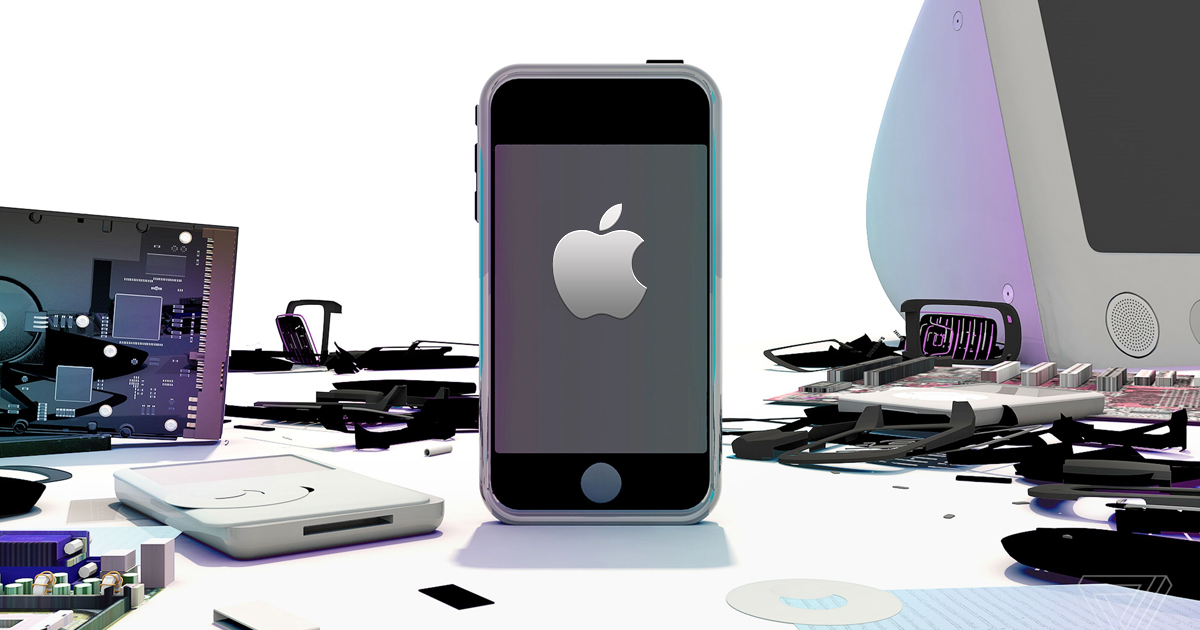
Steve Jobs and Steve Wozniak were perhaps two of the biggest innovative thinkers the world has ever seen. Their vision was so futuristic, one could only stand in awe and watch them create history. Jobs and Wozniak were first introduced to each other way back in the year 1971, by Bill Fernandez, who went on to become one of the first Apple employees. They became really close because of their shared love for technology and of course, pranks.
In fact, the two did not join forces for technology, but for their shared love for out of the box pranks. They would create extraordinarily provocative art which ended up being displayed at a graduation ceremony. They went so far as to almost be able to call the Pope in Vatican.
Eventually, like everyone else, the two pranksters grew tired of their ways and decided to focus on their love for technology like they had planned. Their first groundbreaking entry into the world of innovation was by creating “blue boxes,” a system which enabled people to make long distance calls for free.
In 1975, the two Steves attended the Homebrew Computer Club together, a computer hobbyist group which gathered at California’s Menlo Park. It was here, Woz first saw the MITS Altair, which today looks like little more than a box of lights and circuit boards. The two were inspired by the build it yourself approach followed by MITS (the Altair came as a kit) to make something simpler for the rest of the world. This philosophy continues to shine through in Apple’s products even today.
The first Apple computer, Apple 1, was created by Woz as a means of competition to show off what he could do with such limited resources. However, little did Woz know that Jobs would like the archetype so much, he would use it for all future Apple products. Woz built everything at Apple with his own hands and he wanted to actually sell the devices for a little more than the products used to build the devices.
However, Jobs had a bigger (and better) plan for Apple altogether. Jobs cracked a deal with the Byte Shop in Mountain View to supply it with 50 computers priced at $ 500 each. This meant, once the store had taken its cut, the Apple 1 sold for $ 666.66. The legend is that Wozniak liked repeating numbers and was unaware of the ‘number of the beast’ connection.
The Byte Shop was going on a limb for Jobs and Wozniak. The fact was, neither did Apple Computers Inc., have the resources to fulfill the order, nor did they have enough Apple I computers. A bank turned down their request for a loan and even the $ 5,000 they received from a friend’s father was not enough to fund the project. In the end, it was Byte’s purchase order that sealed the deal for the Apple founders. Jobs was banking on this order to see them through the end of the project. While the project went through, this risk taking factor became the main reason for one of the first employees of Apple to quit.
Despite the fact that only 200 Apple 1 computers were produced, the success in itself was so high, the team was able to bankroll the Apple 2 project. Once developed, this piece of technology, worth a little over $ 100, was selling a piece of hardware worth ten times that much. This in itself was uncharted territory for Apple as a company. Unfortunately, even with the right software, the Apple 2 could not have been a huge success as it did not adhere to the Company’s already established high standards.
More importantly, Apple 2 was the first computer to use colour graphics in the right way. Apple had designed a computer which embodied what we came to expect of desktop machines through the 1980s, 1990s and the first few years of this century. This was the beginning of everything, before Apple turned things on its head again and moved increasingly toward sealed boxes without the option for internal expansion.
The Apple 1, 2 and 3 were text based machines. The stupendous success of these two brilliant geniuses had left everyone wondering about the future of the Company. They did not have to wait long. Jobs desperately wanted to do something innovative and he got his break when working with the Lisa. From there on, he went on to create the Macintosh, which in itself was a massive revolution.
However, the original Macintosh required a lot of renovations needed to make it a success. For instance, it did not have an internal hard drive and this was cited as a massive problem. After several tweaks and modifications, the Macintosh 2 came into being. This was a massive success instantly at the time of its launch, beating Microsoft, which was the best selling software at the time.
Apple progressed through the years in leaps and bounds. Despite having lost one of the original founders (Ronald Wayne,) Woz took forward the Apple tradition by creating something truly brilliant. From just being a contraption of sorts, Apple products progressed to something far more sophisticated and sleek. Each design was worth taking note of and keeping a watch on the market and the market trends. From the Apple 1 versions, to the iPods and the iMacs of the current world, Apple has come a long way.
Through the years, Apple grew to expand its range of products and with a primary focus on design and technology. Post the stupendous success of the iPods, apple realised a lot of its future success was riding on the kind of products it would launch next. Launching the first ever iPhone on 29th June 2007, Apple created a massive revolution that was considered not only the best by the rest of the world but also by Times, who called the iPhone “The World’s Greatest Invention.” From the first ever phone introduced, Apple had no turning back and since then, has introduced not one, but ten iPhones and through the years, became the first ever company in the world to be valued over a trillion dollars!
Take a moment to ponder about this fact. If Woz and Jobs had not joined the computer club back in the day, then we would not have the empowering technology we have today.
Entrepreneur Stories
Indian Man Quits JPMorgan, Takes 70% Pay Cut to Launch $6 Million Startup
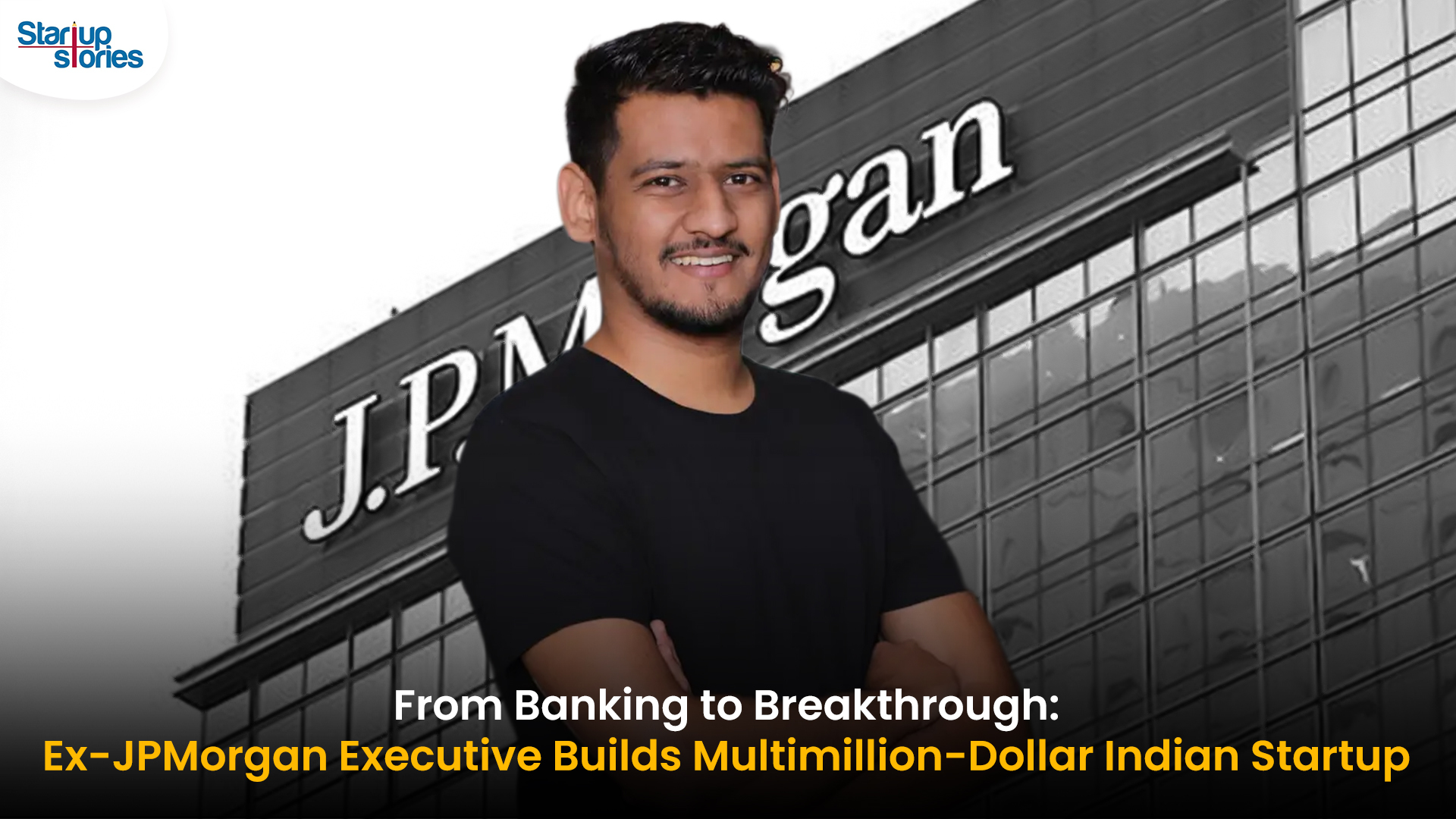
Leaving behind a high-paying job at JPMorgan, an Indian entrepreneur embraced a 70% salary cut to pursue true purpose and passion in the startup world. Disenchanted with what he described as a “robotic” corporate routine, he sought meaningful work that made a real impact. This pivotal decision marked the beginning of his new journey, one focused on value creation rather than titles and corporate perks.
Powered by resilience and fresh perspective, the entrepreneur launched his own startup, prioritizing innovation and hands-on solutions. The road was challenging, but his vision resonated with the market: the startup quickly gained traction and raised $6 million—an impressive acknowledgement of its potential in a competitive landscape. Every hard lesson from early setbacks and bootstrapping paid off in real customer growth and investor confidence.
Today, his journey stands as an inspiring example for professionals seeking authentic success outside the corporate grind. By trading comfort for creative freedom, he grew a venture that solves important problems, generates jobs, and builds wealth beyond just salary. For ambitious founders, his story highlights the power of risk-taking, adaptability, and relentless focus on impact in India’s thriving startup ecosystem.
Videos
Larry Page: The Visionary Co-Founder Behind Google’s Global Success
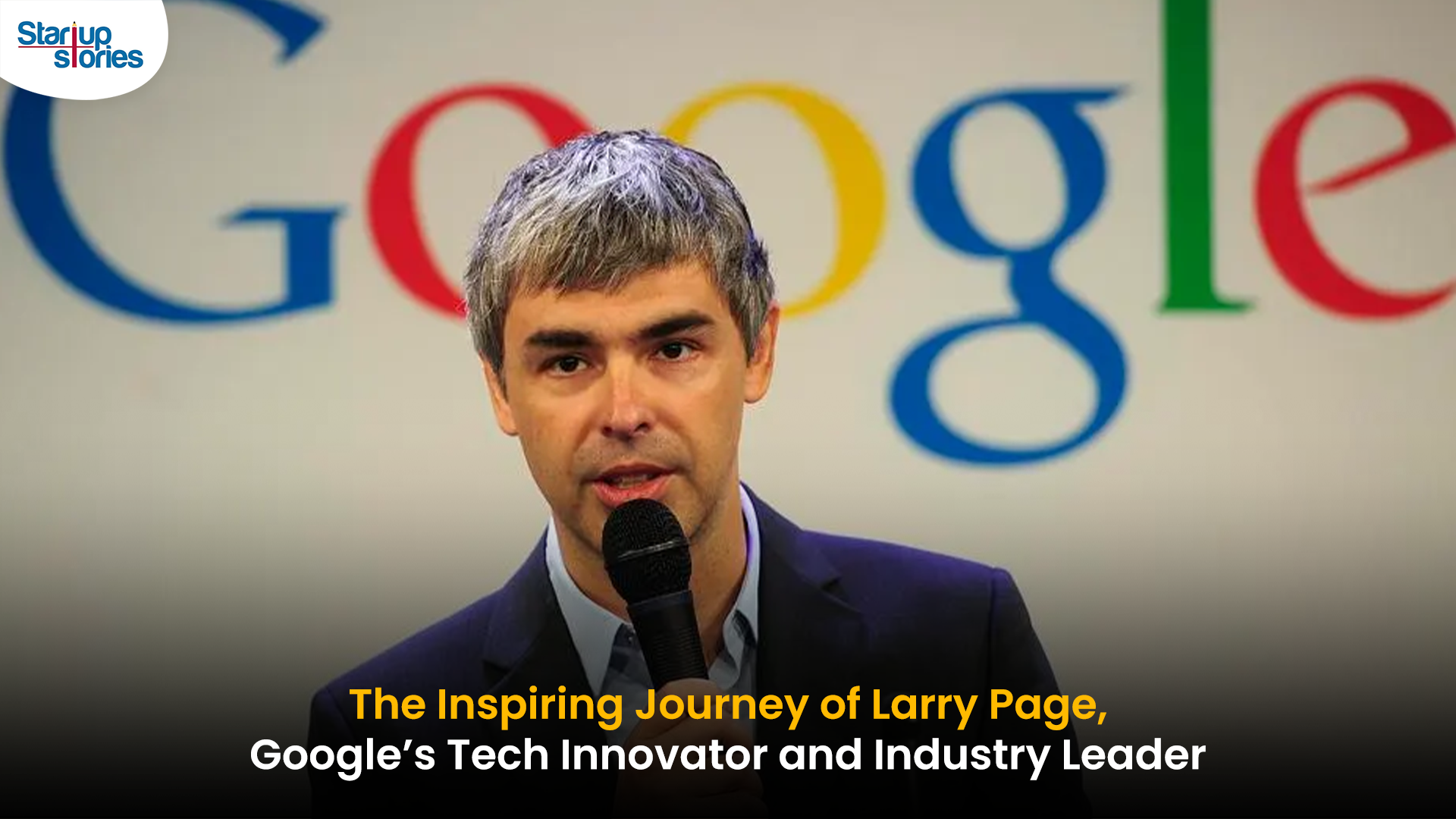
Larry Page is a visionary technology entrepreneur and co-founder of Google, one of the world’s most influential companies. Born in 1973 in Michigan, Page grew up surrounded by computer technology, which inspired his passion for innovation from an early age. He studied computer engineering at the University of Michigan and later pursued his PhD at Stanford University, where he developed the revolutionary PageRank algorithm with Sergey Brin. This technology fundamentally changed the way search engines rank websites, making Google the most accurate and popular search engine globally.
The journey of Larry Page and Google began in 1998 when they officially launched the search engine from a small garage. Leveraging their unique algorithm, Google quickly surpassed competitors due to its ability to deliver highly relevant search results, transforming internet search forever. Under Larry Page’s leadership as CEO, Google expanded beyond search to launch groundbreaking products including YouTube, Gmail, and Google Maps, turning it into a global tech powerhouse that shapes how we access and interact with information online.
Larry Page later became the CEO of Google’s parent company, Alphabet Inc., driving innovation and investment in next-generation technologies such as artificial intelligence, autonomous vehicles, and healthcare solutions. His visionary leadership and commitment to technological advancement have cemented his legacy as one of the most influential figures in the tech industry. Today, Larry Page remains a key influencer in shaping the future of technology and digital innovation worldwide.
Entrepreneur Stories
India’s Tech Story: Airtel Spreads AI Access, Ohm Mobility Lessons
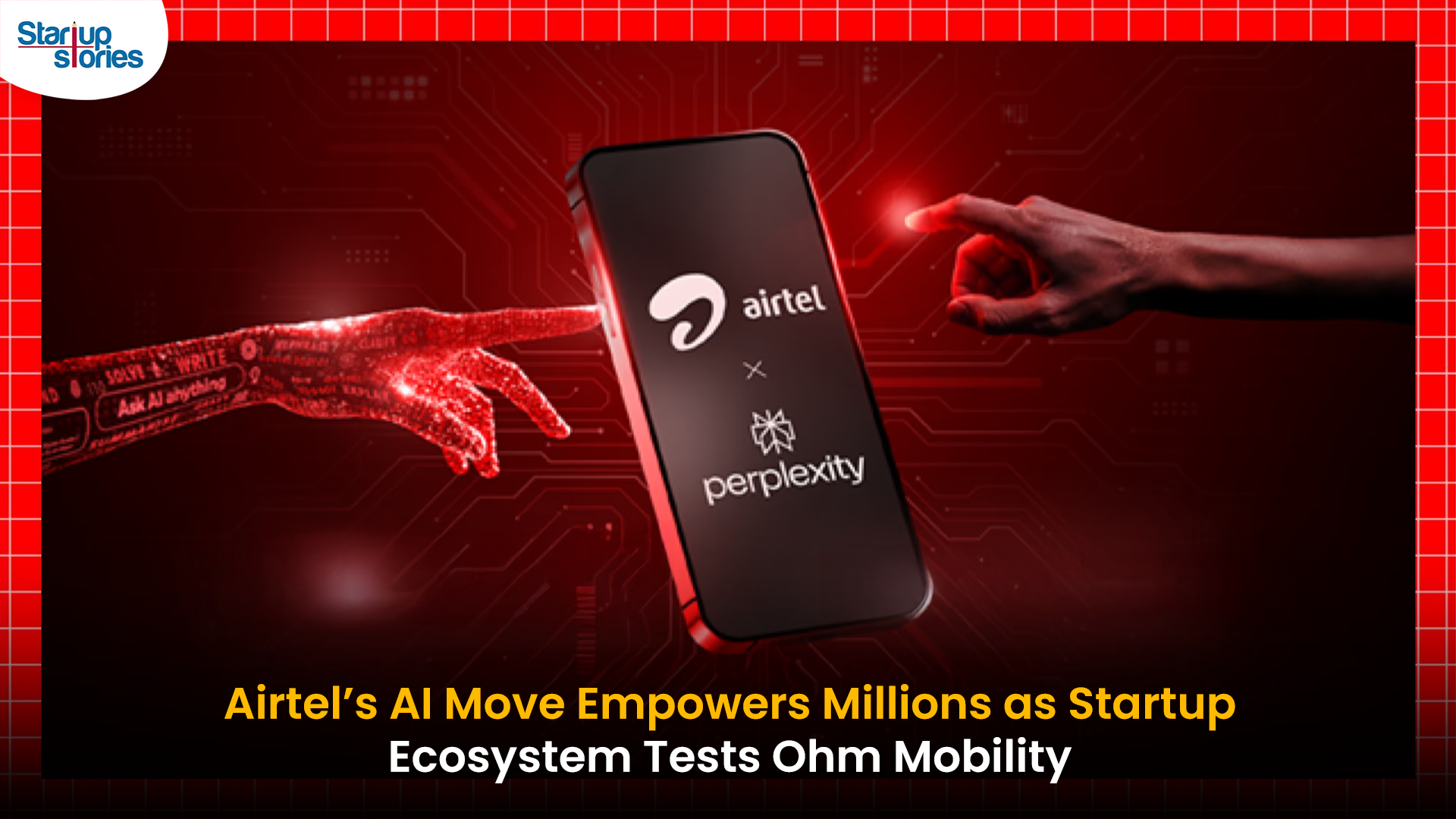
Bharti Airtel has launched the innovative “Airtel-Perplexity Blueprint,” partnering with Perplexity to provide over 360 million customers free access to Perplexity Pro for a year—a benefit valued at ₹17,000 ($200). This collaboration enables Airtel users across mobile, broadband, and digital TV to harness advanced capabilities in generative AI, including leading AI models like GPT 4.1, Claude, and Gemini, along with up to 300 Pro searches daily, image generation, document analysis, and personalized planning services. The move is seen as a milestone for telecom innovation and the democratization of AI in India, making powerful research and productivity tools accessible to a massive user base.
This strategic partnership positions Airtel as an “AI-first” telecom provider, allowing it to gain key insights into user interactions with artificial intelligence and adapt its networks for growing digital demands. For Perplexity, the tie-up grants exclusive access to India’s vast telecom audience, rapidly propelling the app to the No. 1 spot on the Indian App Store, surpassing global competitors like ChatGPT and Google Gemini. Airtel customers can activate their complimentary subscription seamlessly through the Airtel Thanks App, under the Rewards and OTTs section, reinforcing Airtel’s commitment to digital customer empowerment.
The broader Indian startup ecosystem reflects both breakthrough innovation and hard-earned lessons, illustrated by the recent shutdown of Ohm Mobility, an EV financing startup. Despite multiple pivots and industry-leading investors, Ohm Mobility struggled to achieve a sustainable business model—a reminder of the challenges in market fit and adaptability. As AI adoption accelerates and startup realities evolve, industry leaders like Airtel and Perplexity are setting new standards, while others, like Ohm Mobility, offer valuable insights on resilience and the importance of business model flexibility in India’s dynamic tech landscape.


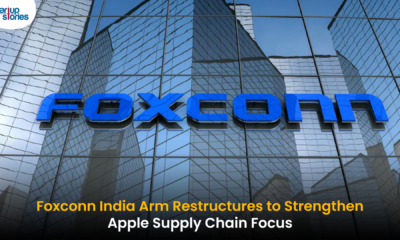

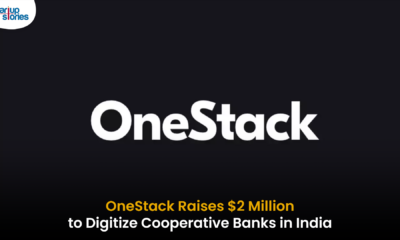









Elwanda Cappola
April 14, 2025 at 1:31 pm
Hey there, You have performed an excellent job. I will certainly digg it and in my opinion recommend to my friends. I am confident they’ll be benefited from this web site.
Melynda Falls
May 3, 2025 at 12:23 am
Thank you for another magnificent post. Where else may anybody get that kind of info in such an ideal means of writing? I’ve a presentation next week, and I am on the look for such information.
vtc
June 6, 2025 at 7:31 am
Hi, i feel that i saw you visited my website so i came to “go back the choose”.I’m trying to to find things to enhance my site!I suppose its ok to make use of some of your concepts!!
zkf8m
June 7, 2025 at 3:30 pm
where can i get cheap clomid without dr prescription clomid pct clomid price uk where can i get cheap clomid price buying cheap clomiphene price cost cheap clomiphene for sale can i buy clomiphene price
Leadership Development
June 11, 2025 at 12:23 am
What i do not understood is actually how you are not really much more well-liked than you might be now. You’re so intelligent. You realize therefore significantly relating to this subject, made me personally consider it from numerous varied angles. Its like women and men aren’t fascinated unless it’s one thing to accomplish with Lady gaga! Your own stuffs nice. Always maintain it up!
Vanesa Flannagan
July 1, 2025 at 3:41 am
I was suggested this website by my cousin. I am not sure whether this post is written by him as nobody else know such detailed about my trouble. You are wonderful! Thanks!
read
July 11, 2025 at 8:22 pm
There is noticeably a bundle to learn about this. I assume you made certain good factors in options also.
Hawaii medical malpractice lawyer
July 24, 2025 at 6:45 am
That is the precise weblog for anyone who wants to find out about this topic. You notice a lot its almost exhausting to argue with you (not that I actually would need…HaHa). You undoubtedly put a brand new spin on a subject thats been written about for years. Nice stuff, simply great!
Fluke Network Testing san antonio tx
July 30, 2025 at 2:42 am
Great site! I am loving it!! Will come back again. I am taking your feeds also
olxtoto slot
August 15, 2025 at 4:40 pm
Real clear internet site, appreciate it for this post.
data macau
August 17, 2025 at 6:15 pm
Thanks for the auspicious writeup. It actually was a amusement account it. Glance advanced to more added agreeable from you! However, how could we be in contact?
pestoto togel
August 21, 2025 at 4:44 pm
My developer is trying to convince me to move to .net from PHP. I have always disliked the idea because of the expenses. But he’s tryiong none the less. I’ve been using Movable-type on a variety of websites for about a year and am nervous about switching to another platform. I have heard very good things about blogengine.net. Is there a way I can import all my wordpress posts into it? Any kind of help would be greatly appreciated!
Plumbers Canberra
September 8, 2025 at 6:18 pm
We stumbled over here by a different web address and thought I may as well check things out. I like what I see so now i am following you. Look forward to finding out about your web page again.
侘 寂 風 衣櫃
September 9, 2025 at 9:54 pm
I do consider all the concepts you’ve offered for your post. They are very convincing and will certainly work. Still, the posts are very quick for beginners. May just you please lengthen them a little from subsequent time? Thank you for the post.
คลิปหลุด
September 16, 2025 at 6:23 am
In accordance with my observation, after a foreclosures home is offered at an auction, it is common for any borrower in order to still have any remaining unpaid debt on the mortgage. There are many lenders who make an effort to have all service fees and liens paid by the future buyer. Even so, depending on particular programs, polices, and state laws and regulations there may be many loans that are not easily resolved through the transfer of lending options. Therefore, the duty still rests on the consumer that has received his or her property in foreclosure. Many thanks for sharing your ideas on this blog site.
Cory Basinski
October 6, 2025 at 3:13 am
Hi, I think your website might be having browser compatibility issues. When I look at your website in Safari, it looks fine but when opening in Internet Explorer, it has some overlapping. I just wanted to give you a quick heads up! Other then that, very good blog!
American football live stream Qatar
October 13, 2025 at 7:59 pm
I just wanted to make a simple note to appreciate you for all of the superb hints you are writing on this website. My time consuming internet search has now been paid with wonderful insight to go over with my friends. I would suppose that many of us website visitors actually are very much fortunate to exist in a notable website with so many brilliant individuals with valuable strategies. I feel very blessed to have come across your entire webpages and look forward to many more amazing moments reading here. Thanks once again for a lot of things.
Eusebia Maugeri
November 2, 2025 at 11:17 pm
I conceive this web site has very wonderful composed content material posts.
Kuwin
November 5, 2025 at 3:41 pm
kuwin sở hữu kho game đa dạng từ slot đến trò chơi bài đổi thưởng, mang đến cho bạn những giây phút giải trí tuyệt vời.
Firework Gender Reveal Ideas
November 6, 2025 at 8:43 am
Nice post. It’s very well thought out and quite educating. Keep it up.
tin beer signs
November 9, 2025 at 3:41 pm
http://www.factorytinsigns.com is 100 Trusted Global Metal Vintage Tin Signs Online Shop. We have been selling art and décor online worldwide since 2008. Started in Sydney, Australia. 2000+ Tin Beer Signs, Outdoor Metal Wall Art, Business Tin Signs, Vintage Metal Signs to choose from. 100 Premium Quality Artwork. Up-to 40 OFF Sale Store-wide. Fast Shipping USA, Canada, UK, Australia, New Zealand, Europe.
Honey Recipe
November 9, 2025 at 11:41 pm
I went over this website and I conceive you have a lot of fantastic information, saved to bookmarks (:.
iwin
November 10, 2025 at 7:36 pm
iwin – nền tảng game bài đổi thưởng uy tín, nơi bạn có thể thử vận may và tận hưởng nhiều tựa game hấp
oil painting reproductions
November 11, 2025 at 2:49 am
http://www.arttree.com.au is Australia Popular Online Art Store. We sell Canvas Prints, Handmade Canvas Oil Paintings, Customer Artwork, Handmade Canvas Portraits. We Offer Year Round Sale and Get Up-to 70 Percent OFF Discount. We give FREE Delivery Australia, Sydney, Melbourne, Brisbane, Adelaide, Hobart and all regional areas. We ship Worldwide at many international locations.
texture artwork
November 11, 2025 at 8:54 am
http://www.arttree.com.au is Australia Popular Online Art Store. We sell Canvas Prints, Handmade Canvas Oil Paintings, Customer Artwork, Handmade Canvas Portraits. We Offer Year Round Sale and Get Up-to 70 Percent OFF Discount. We give FREE Delivery Australia, Sydney, Melbourne, Brisbane, Adelaide, Hobart and all regional areas. We ship Worldwide at many international locations.
GO88
November 11, 2025 at 10:35 pm
Tham gia cộng đồng game thủ tại Go88 để trải nghiệm các trò chơi bài, poker phổ biến nhất hiện nay.
link slot
November 12, 2025 at 12:35 am
Hey There. I found your blog using msn. This is a really well written article. I will make sure to bookmark it and return to read more of your useful info. Thanks for the post. I’ll definitely comeback.
ios超级签
November 12, 2025 at 11:31 am
苹果签名,苹果超级签平台,ios超级签平台ios超级签苹果企业签,苹果超级签,稳定超级签名
poker88
November 12, 2025 at 5:00 pm
hey there and thanks for your information ? I?ve certainly picked up anything new from right here. I did however experience a few technical points the use of this website, since I experienced to reload the web site lots of instances previous to I may get it to load properly. I were brooding about if your web hosting is OK? No longer that I’m complaining, however sluggish loading instances occasions will sometimes have an effect on your placement in google and can damage your quality rating if advertising and ***********|advertising|advertising|advertising and *********** with Adwords. Anyway I am adding this RSS to my e-mail and can look out for a lot more of your respective intriguing content. Ensure that you replace this once more soon..
Bk8
November 13, 2025 at 3:17 am
One thing I’ve noticed is there are plenty of myths regarding the banks intentions when talking about home foreclosure. One fantasy in particular is always that the bank needs to have your house. Your banker wants your hard earned dollars, not the home. They want the funds they lent you with interest. Avoiding the bank is only going to draw a new foreclosed summary. Thanks for your publication.
nextogel
November 13, 2025 at 7:29 pm
Hello! Would you mind if I share your blog with my twitter group? There’s a lot of folks that I think would really appreciate your content. Please let me know. Thank you
sexquangninh.lat
November 14, 2025 at 3:05 pm
We’re a gaggle of volunteers and opening a new scheme in our community. Your website offered us with valuable information to work on. You have performed a formidable job and our entire group will likely be grateful to you.
THABET
November 15, 2025 at 3:59 am
Hi there are using WordPress for your blog platform? I’m new to the blog world but I’m trying to get started and create my own. Do you need any coding expertise to make your own blog? Any help would be really appreciated!
linetogel
November 15, 2025 at 12:41 pm
Thanks for your exciting article. Other thing is that mesothelioma cancer is generally a result of the breathing of material from asbestos, which is a carcinogenic material. It can be commonly noticed among laborers in the structure industry who have long contact with asbestos. It is also caused by residing in asbestos protected buildings for some time of time, Inherited genes plays a crucial role, and some people are more vulnerable on the risk compared to others.
J88
November 15, 2025 at 12:46 pm
Đến với J88, bạn sẽ được trải nghiệm dịch vụ cá cược chuyên nghiệp cùng hàng ngàn sự kiện khuyến mãi độc quyền.
Hometogel
November 15, 2025 at 5:11 pm
Wow! This blog looks exactly like my old one! It’s on a completely different subject but it has pretty much the same page layout and design. Superb choice of colors!
Mariatogel
November 15, 2025 at 6:15 pm
We absolutely love your blog and find many of your post’s to be exactly I’m looking for. Does one offer guest writers to write content to suit your needs? I wouldn’t mind composing a post or elaborating on a few of the subjects you write related to here. Again, awesome site!
dewatogel
November 15, 2025 at 9:51 pm
Good article. It’s very unfortunate that over the last one decade, the travel industry has had to tackle terrorism, SARS, tsunamis, flu virus, swine flu, along with the first ever true global economic downturn. Through all this the industry has proven to be robust, resilient and dynamic, obtaining new solutions to deal with adversity. There are generally fresh problems and possibilities to which the marketplace must once again adapt and act in response.
Hometogel
November 15, 2025 at 10:55 pm
Its such as you read my mind! You seem to understand a lot approximately this, like you wrote the e-book in it or something. I believe that you can do with a few to drive the message home a little bit, however instead of that, this is wonderful blog. A great read. I’ll definitely be back.
Anderson Aguiler
November 16, 2025 at 1:33 am
Hi! I’m at work surfing around your blog from my new iphone! Just wanted to say I love reading your blog and look forward to all your posts! Keep up the great work!
Mariatogel
November 16, 2025 at 3:06 pm
Nice post. I was checking constantly this weblog and I am impressed! Extremely useful info specially the remaining part 🙂 I deal with such info much. I was looking for this particular information for a long time. Thanks and best of luck.
dewatogel
November 16, 2025 at 5:04 pm
I have not checked in here for a while as I thought it was getting boring, but the last several posts are great quality so I guess I will add you back to my daily bloglist. You deserve it my friend 🙂
Pro SEO Company
November 18, 2025 at 3:00 am
Finally, something worth reading. It’s great to find posts like this one.
all exclusive vacations
November 19, 2025 at 1:35 pm
Good article. It is extremely unfortunate that over the last decade, the travel industry has had to deal with terrorism, SARS, tsunamis, influenza, swine flu, and also the first ever true global recession. Through everything the industry has proven to be strong, resilient in addition to dynamic, obtaining new tips on how to deal with hardship. There are continually fresh problems and possibilities to which the sector must just as before adapt and act in response.
upmarket travel companies
November 19, 2025 at 5:07 pm
Hi! Someone in my Myspace group shared this site with us so I came to give it a look. I’m definitely loving the information. I’m book-marking and will be tweeting this to my followers! Wonderful blog and wonderful design.
dewatogel
November 20, 2025 at 3:35 am
I like what you guys are up too. Such smart work and reporting! Carry on the superb works guys I have incorporated you guys to my blogroll. I think it’ll improve the value of my website 🙂
Jonitogel
November 21, 2025 at 2:19 am
Very nice post. I simply stumbled upon your blog and wished to mention that I’ve truly enjoyed browsing your weblog posts. After all I?ll be subscribing in your rss feed and I am hoping you write once more very soon!
inatogel
November 21, 2025 at 5:55 am
One other thing to point out is that an online business administration program is designed for students to be able to without problems proceed to bachelors degree courses. The 90 credit certification meets the lower bachelor diploma requirements and when you earn your associate of arts in BA online, you will have access to the most up-to-date technologies in this field. Several reasons why students are able to get their associate degree in business is because they are interested in this area and want to receive the general schooling necessary in advance of jumping right into a bachelor diploma program. Thx for the tips you actually provide as part of your blog.
Rokokbet
November 21, 2025 at 3:50 pm
Thanks for your personal marvelous posting! I seriously enjoyed reading it, you might be a great author.I will make sure to bookmark your blog and will eventually come back sometime soon. I want to encourage you continue your great writing, have a nice weekend!
hometogel
November 22, 2025 at 12:14 am
I found your weblog website on google and test a few of your early posts. Proceed to keep up the superb operate. I simply extra up your RSS feed to my MSN News Reader. Seeking forward to reading extra from you later on!?
AYUTOGEL
November 23, 2025 at 4:37 pm
Wonderful work! This is the type of info that should be shared around the net. Shame on Google for not positioning this post higher! Come on over and visit my web site . Thanks =)
sexvipnhanh.lat
November 24, 2025 at 11:01 am
Greetings from Florida! I’m bored to death at work so I decided to check out your blog on my iphone during lunch break. I really like the information you provide here and can’t wait to take a look when I get home. I’m surprised at how fast your blog loaded on my phone .. I’m not even using WIFI, just 3G .. Anyhow, fantastic site!
Build Lean Muscle Safely
November 24, 2025 at 4:12 pm
Valuable info. Lucky me I found your site by accident, and I’m shocked why this accident didn’t happened earlier! I bookmarked it.
AYUTOGEL
November 24, 2025 at 11:05 pm
Hi, Neat post. There is a problem with your site in internet explorer, would check this? IE still is the market leader and a big portion of people will miss your wonderful writing due to this problem.
MM88
November 24, 2025 at 11:57 pm
Với giao diện mượt mà và ưu đãi hấp dẫn, MM88 là lựa chọn lý tưởng cho các tín đồ giải trí trực tuyến.
togelup
November 26, 2025 at 4:13 am
Today, considering the fast lifestyle that everyone is having, credit cards get this amazing demand throughout the economy. Persons out of every field are using the credit card and people who aren’t using the credit cards have prepared to apply for one in particular. Thanks for sharing your ideas on credit cards.
SEO SMM Solution
November 26, 2025 at 8:01 am
This is a really nice post. It’s very informative and well organized. I’ll check back for more posts like this one.
state farm agent
November 26, 2025 at 8:46 pm
Hiya, I’m really glad I have found this info. Nowadays bloggers publish only about gossips and web and this is really annoying. A good site with interesting content, this is what I need. Thanks for keeping this site, I’ll be visiting it. Do you do newsletters? Cant find it.
state farm agent
November 27, 2025 at 4:20 am
I just couldn’t depart your web site prior to suggesting that I extremely enjoyed the standard info a person provide for your visitors? Is gonna be back often in order to check up on new posts
Kolby Zipperer
November 27, 2025 at 6:03 am
Hey! Do you know if they make any plugins to protect against hackers? I’m kinda paranoid about losing everything I’ve worked hard on. Any recommendations?
nature's blend dog food
November 28, 2025 at 4:51 am
I was just looking for this info for a while. After 6 hours of continuous Googleing, finally I got it in your web site. I wonder what’s the lack of Google strategy that don’t rank this type of informative websites in top of the list. Generally the top web sites are full of garbage.
insurance agency near me
November 28, 2025 at 4:52 am
Unquestionably believe that which you said. Your favorite justification appeared to be on the web the simplest thing to be aware of. I say to you, I definitely get irked while people consider worries that they plainly do not know about. You managed to hit the nail upon the top and defined out the whole thing without having side-effects , people could take a signal. Will probably be back to get more. Thanks
EJ Silvers - State Farm Insurance Agent
November 28, 2025 at 5:26 pm
Unquestionably believe that which you said. Your favorite reason seemed to be on the net the simplest thing to be aware of. I say to you, I definitely get irked while people consider worries that they just do not know about. You managed to hit the nail upon the top as well as defined out the whole thing without having side-effects , people can take a signal. Will probably be back to get more. Thanks
insurance agency
November 30, 2025 at 4:57 am
I have been browsing online more than three hours today, yet I never found any interesting article like yours. It is pretty worth enough for me. In my opinion, if all website owners and bloggers made good content as you did, the web will be a lot more useful than ever before.
bariatric gelatin trick
December 1, 2025 at 10:08 am
Utterly composed articles, regards for entropy.
insurance agency near me
December 2, 2025 at 1:01 am
Does your blog have a contact page? I’m having problems locating it but, I’d like to shoot you an e-mail. I’ve got some recommendations for your blog you might be interested in hearing. Either way, great website and I look forward to seeing it grow over time.
MM88
December 3, 2025 at 2:52 am
Khám phá thế giới giải trí trực tuyến đỉnh cao tại MM88, nơi mang đến những trải nghiệm cá cược thể thao và casino sống động.
Kandiss Ecton - State Farm Insurance Agent
December 3, 2025 at 3:28 am
I have realized that car insurance providers know the cars and trucks which are vulnerable to accidents and various risks. Additionally , they know what types of cars are susceptible to higher risk as well as the higher risk they have got the higher the actual premium amount. Understanding the straightforward basics involving car insurance will let you choose the right form of insurance policy that will take care of your preferences in case you happen to be involved in any accident. Thanks for sharing a ideas for your blog.
TK88
December 6, 2025 at 3:44 pm
What I have often told folks is that when searching for a good internet electronics store, there are a few components that you have to remember to consider. First and foremost, you should really make sure to choose a reputable and in addition, reliable shop that has received great reviews and scores from other shoppers and marketplace people. This will ensure you are dealing with a well-known store that gives good program and help to their patrons. Thanks for sharing your notions on this site.
tron suffix
December 7, 2025 at 4:08 am
I think other website proprietors should take this site as an model, very clean and wonderful user friendly style and design, as well as the content. You’re an expert in this topic!
toto togel
December 7, 2025 at 8:08 am
I just couldn’t depart your site prior to suggesting that I really enjoyed the standard information a person provide for your visitors? Is gonna be back often in order to check up on new posts
olxtoto
December 7, 2025 at 12:45 pm
There is noticeably a lot to realize about this. I think you made various nice points in features also.
State Farm Insurance Agent
December 8, 2025 at 3:22 am
Undeniably consider that which you said. Your favorite justification appeared to be at the net the simplest thing to bear in mind of. I say to you, I certainly get annoyed while other folks consider issues that they plainly do not recognise about. You managed to hit the nail upon the top as neatly as defined out the entire thing with no need side-effects , folks could take a signal. Will probably be again to get more. Thank you
State Farm Insurance Agent
December 8, 2025 at 7:02 am
Wow, superb weblog format! How long have you been blogging for? you made running a blog look easy. The whole glance of your site is magnificent, let alone the content!
Kontynuuj
December 9, 2025 at 1:56 am
Nicely articulated
movies4u
December 9, 2025 at 10:13 pm
hi!,I like your writing so much! share we communicate more about your post on AOL? I need a specialist on this area to solve my problem. Maybe that’s you! Looking forward to see you.
live adult webcams
December 10, 2025 at 5:09 am
Valuable information. Lucky me I found your web site by accident, and I’m shocked why this accident didn’t happened earlier! I bookmarked it.
movies4u
December 10, 2025 at 8:28 am
Hey there, You’ve done a fantastic job. I?ll definitely digg it and personally recommend to my friends. I’m confident they will be benefited from this site.